EDM For The Long Run
To manufacture large quantities of similar parts, a Georgia machine shop has found that wire EDM is the ideal process.
Share





Because it plays a supporting role in many shops, wire EDM isn't widely associated with high-volume production. But metalworking professionals who choose wire EDM as their mainline process continue to develop strategies that boost its efficiency. Thus, many of those at the forefront of wire EDM applications view this technology as undervalued by shops that use it only for secondary operations.
Robert W. Jenkins, president of Bellwether Inc. (McDonough, Georgia) is a firm believer in the untapped potential of wire EDM. His company's success in providing high-quality, precision parts for various industries confirms the proposition that, in some cases, wire-cutting represents the most effective machining process.
As a former employee of Amoco Chemical Company's Fabrics Division, Mr. Jenkins was closely associated with Georgia's carpet-backing industry during the early 1970s. Polypropylene is a byproduct of gasoline refining, and Amoco was developing a market to use this plastic in woven form to replace the traditional jute backing of carpets. In the course of his work, Mr. Jenkins became familiar with the dominant type of weaving machine used by various fabric manufacturers. Focusing on small, consumable parts used by this machine, Mr. Jenkins identified an important market for replacements. This opportunity convinced him to establish his machine shop in 1975.
Today, Bellwether Inc. is a 30-employee shop located in the northern Georgia countryside, a short distance south of Atlanta's urban sprawl. Although it resembles a typical job shop in many ways, wire EDM represents the heart of Bellwether's operations. On the shop floor, Mr. Jenkins combines the latest EDM technology with conventional metalworking methods to effectively address the specialized needs of his customers.
Adapting To New Conditions
The business downturn that currently affects manufacturing arrived somewhat earlier for the Southeastern textile industry. After experiencing strong growth between 1988 and 1992, Bellwether's textile-related business remained steady until 1998. From 1998 to 2000, however, strong foreign competition created substantial weakness in the domestic industry, and Bellwether experienced a sharp, 30-percent reduction in its work for textile companies. According to Mr. Jenkins, this resulted from saturation of the American textile market with low-cost imports.
As a consequence, Mr. Jenkins began to explore opportunities to replace some of the business that his firm had lost. "We've found that, if you're going to survive today, you need to be very broad-based," he says. To this end, the company recently established a close relationship with a major domestic manufacturer of power tools. Bellwether designs and fabricates ergonomically friendly tool fixtures that are sold as accessories to manufacturers whose employees use power tools to perform repetitive assembly tasks. This is a promising area for future growth, as manufacturing firms endeavor to meet government regulations in the workplace. "We have found ways to reduce exposure to cumulative trauma injuries," says Mr. Jenkins. "We believe this is very important work because it directly and positively affects employees' daily productivity."
Another important source of new business for Bellwether is the design and fabrication of new types of automatic assembly machines for the recreational products industry. For example, the shop is currently building a machine that automates installation of the rubber molding around the perimeter of a tractor windshield. A second project involves redesigning a metal forming machine that creates small wheel hubs.
By diversifying his shop's work, Mr. Jenkins doubled the level of Bellwether's non-textile business in only one year. The shop's current business consists of approximately 60 percent textile-related work, with the remaining 40 percent comprising parts, fixtures, dies and tooling manufactured for the mining, aerospace, medical and recreational industries. Approximately 75 percent of Bellwether's work is performed for domestic customers. Exceeding the norm for metalworking shops today, Mr. Jenkins reports that his sales improved 18 percent during the past year, and he anticipates at least 10 percent growth in the current fiscal year.
Complex Simplicity
The original mainstays of Bellwether's business—and still important in its success—are parts known as "feeder grippers" and "shuttle grippers." These are small parts that grip and carry weft yarns as they are drawn through the weaving machine and inserted into the fabric as it's being woven. Because this machine's operation is entirely dependent on proper functioning of these parts, they must be designed and machined to exacting specifications.
Although the parts appear quite simple in design, they must be capable of withstanding the rigors of continuous production. Because of varying fabric requirements for different fabric grades and manufacturers, Bellwether has made 95 versions of this part. The grippers also incorporate several different jaw designs for handling various fabrics, and the jaw tension must be carefully matched to the specific fabric application. Mr. Jenkins' strong commitment to quality enables his shop to produce parts that are superior to those furnished by the weaving machine's original manufacturer. This represents an important factor in Bellwether's ability to sustain its textile-related business.
"We don't lose a customer because of mistakes," says Mr. Jenkins. "The only reason that we lose a customer is because they no longer use the type of machine that requires our parts." He cites Bellwether's standard of quality as the key factor enabling his firm to compete in a Georgia economy from which a number of metalworking shops have disappeared in recent years.
Controlling The Process
Among various factors involved in his production process, Mr. Jenkins believes that improvements in the CNC controls for wire EDM machines have produced the greatest gains in efficiency. Taking advantage of this technology, Bellwether currently operates three of its seven wire EDM machines with Fanuc Robocut controls. "The nature of EDM is that you want to optimize the ‘on' cycle when the wire electrode is cutting metal," says Mr. Jenkins. "Our newer wire machines are much more user-friendly than the older models, and the controls run these machines much faster."
For example, when Bellwether purchased its first wire EDM machine in 1983, the machine had a maximum speed of 10 square inches per hour. By comparison, the Fanuc machines that Mr. Jenkins purchased during the past two years can cut as many as 28.5 square inches per hour.
Programming time has also been substantially reduced. "The newer controls only require the operator to specify the type of material being cut, its thickness and the desired cutting speed," says Mr. Jenkins. "On older machines, parameters such as wire tension, water flow and servo voltage needed to be individually calculated and set by the operator." The new controls also incorporate advanced off-line programming functions that can be used while the machine is running.
Training employees to operate the new machines is also much easier than in the past. "An operator with a reasonable degree of aptitude and motivation can be brought to a relatively high degree of proficiency with only three to four months of properly supervised training," says Mr. Jenkins.
Use It Or Lose It
"The really important question in making a capital investment is whether you can keep a particular machine running," says Mr. Jenkins. "In my experience, a shop can't do much with only one wire EDM machine. Shops that only run one or two machines may be getting no better than 60-percent utilization—but that's not good enough for us. The goal that we want to achieve is closer to 80 percent."
This drive to increase utilization creates some important challenges for Mr. Jenkins. For example, wire EDM machines require regular maintenance, and this work must be carefully scheduled to cause the least possible disruption in a shop's production process. Critical to this process is effective flushing of the cutting zone. Impurities that accumulate in the electrolytic solution can create serious problems for wire EDM machines.
"Cleanliness is very important and we try to keep our systems free from debris and buildup," says Mr. Jenkins. "To get proper flushing, the water must be clean when it enters the system. Vises and tables must also be cleaned each time that machines are unloaded, and machine filters must be changed at proper intervals."
Dirty shop air is another problem that adversely affects wire EDM machines. In this case, fine kerf particles floating in the air can settle inside the machine's circuit boards and short them out. By using air-filtration devices, Bellwether has virtually eliminated this problem.
Because wire EDM machines can complete small, thin parts relatively quickly, the shop's mainstay feeder-gripper parts are ideal to maximize the productive capacity of Bellwether's cell of seven machines. While shops that produce larger or more varied parts may bolster efficiency by using robots and pallet systems to load wire EDM machines, Mr. Jenkins gets excellent results with a more conventional approach.
Bellwether's strategy is to gang several parts within a specially fabricated workholding fixture for machining in a single setup. These workholders incorporate crossover pathways that allow the wire to move from part to part for unattended machining. "Machines equipped with adequate workholding fixtures can be left running for long production cycles with little attention," says Mr. Jenkins. "This may be the most underutilized feature of wire EDM work." Following its daily late shift, for example, Bellwether operates the machines via timers from Midnight to 6:00 a.m.
Supporting Actors
Bellwether makes excellent use of two technologies—one new and one old—to support its mainline EDM operations. To cut metal blanks, the shop uses an abrasive waterjet machine manufactured by Omax Corporation (Kent, Washington). The machine is controlled by proprietary software that runs on a standard PC. The waterjet is capable of holding positioning accuracy of 0.003 inches, and its standard cutting speed of 200 ipm saves operators a substantial amount of time in preparing blanks.
Bellwether's operators currently use the waterjet machine to cut small, tool-steel blanks for the feeder-gripper parts. The waterjet is also used to cut thick, semi-circular segments for a retainer ring that the shop manufactures for heavy-duty agitator pumps used in the mining industry. This consumable part retains the pump's impeller, and it must be replaced each time the pump is disassembled for maintenance.
The metal specified for these retainer rings is Ni-Hard stainless steel (Type CD4MCu). This hard and "live" metal incorporates a substantial amount of stress. "If we didn't have the waterjet, I don't think we'd be making these parts," says Mr. Jenkins. This is true because the amount of time required to cut these blanks using wire EDM would be prohibitive, and the shop's wire machines would be unduly occupied under those circumstances. Using a conventional process such as sawing to cut blanks also would not be feasible because of this metal's susceptibility to machining stresses. Because it imparts no heat or mechanical forces to the metal during cutting, the abrasive waterjet is well suited for this job.
Although Ni-Hard stainless cannot be heat treated, for metals that do require heat treatment, Bellwether employs a simple and cost-effective process. When the shop was originally established, Mr. Jenkins needed a heat treatment capability, but he was discouraged by the high cost of equipment. As an alternative, he began using a ceramic kiln that was capable of generating and sustaining the necessary temperatures.
Because most of the parts that Bellwether manufactures are small, the shop has continued using ceramic kilns for all its heat treatment work. As a cutting process that's independent of metal hardness, EDM allows the shop to perform heat treatment at a very early stage in the manufacturing process.
Made To Order
Despite the fact that his shop has the capability to perform all types of conventional machining, Mr. Jenkins has chosen to build his business primarily on the inherent advantages of the EDM process. Foremost among these is the fact that EDM is equally effective regardless of which type of metal a shop machines. While eliminating tool consumption issues, wire EDM is an extremely accurate process with the capacity to produce excellent surface finishes. In this regard, an inverse relationship exists between the machine's cutting speed and the surface quality. Depending on the job requirements, therefore, an entire range of adjustments is possible to achieve the desired finish.
The complementary roles played by wire EDM and abrasive waterjet in Bellwether's shop are intriguing because neither of these technologies involves conventional cutting tools. While not many machine shops have the luxury of working primarily with these types of machine tools, this circumstance lends greater predictability to Mr. Jenkins' overall process. Based on Bellwether's success in adapting to a fast-changing market, this technology represents an important advantage.
Click here for more information about suppliers Methods Machine Tools, Inc. and OMAX Corporation.
Related Content
5 Tips for Running a Profitable Aerospace Shop
Aerospace machining is a demanding and competitive sector of manufacturing, but this shop demonstrates five ways to find aerospace success.
Read MoreHigh RPM Spindles: 5 Advantages for 5-axis CNC Machines
Explore five crucial ways equipping 5-axis CNC machines with Air Turbine Spindles® can achieve the speeds necessary to overcome manufacturing challenges.
Read MoreHow to Successfully Adopt Five-Axis Machining
While there are many changes to adopt when moving to five-axis, they all compliment the overall goal of better parts through less operations.
Read MoreBallbar Testing Benefits Low-Volume Manufacturing
Thanks to ballbar testing with a Renishaw QC20-W, the Autodesk Technology Centers now have more confidence in their machine tools.
Read MoreRead Next
Setting Up the Building Blocks for a Digital Factory
Woodward Inc. spent over a year developing an API to connect machines to its digital factory. Caron Engineering’s MiConnect has cut most of this process while also granting the shop greater access to machine information.
Read MoreRegistration Now Open for the Precision Machining Technology Show (PMTS) 2025
The precision machining industry’s premier event returns to Cleveland, OH, April 1-3.
Read More5 Rules of Thumb for Buying CNC Machine Tools
Use these tips to carefully plan your machine tool purchases and to avoid regretting your decision later.
Read More











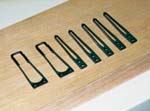
%20and%20his%20brother%20John.jpg;width=860)


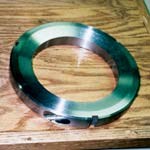
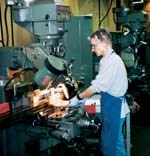
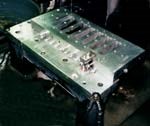
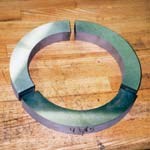


















.jpg;maxWidth=970;quality=90)